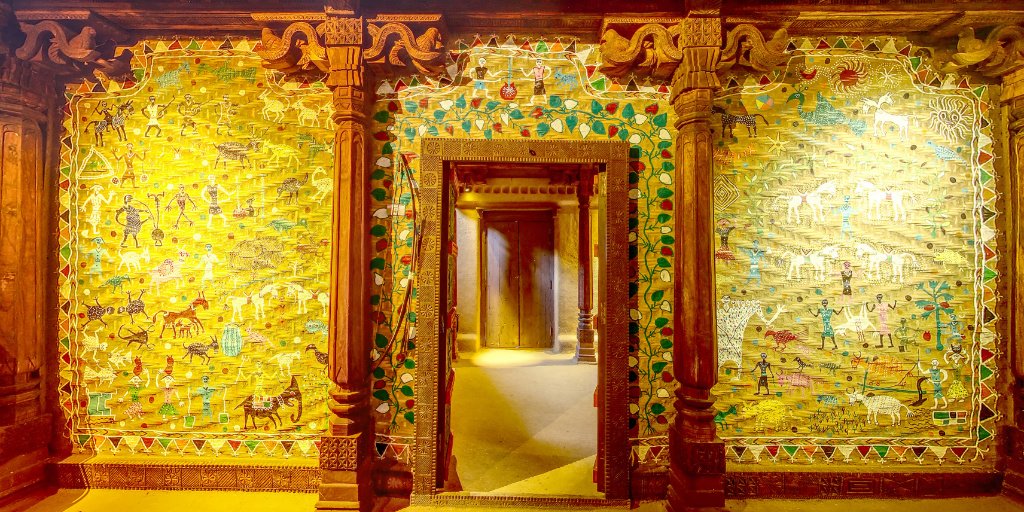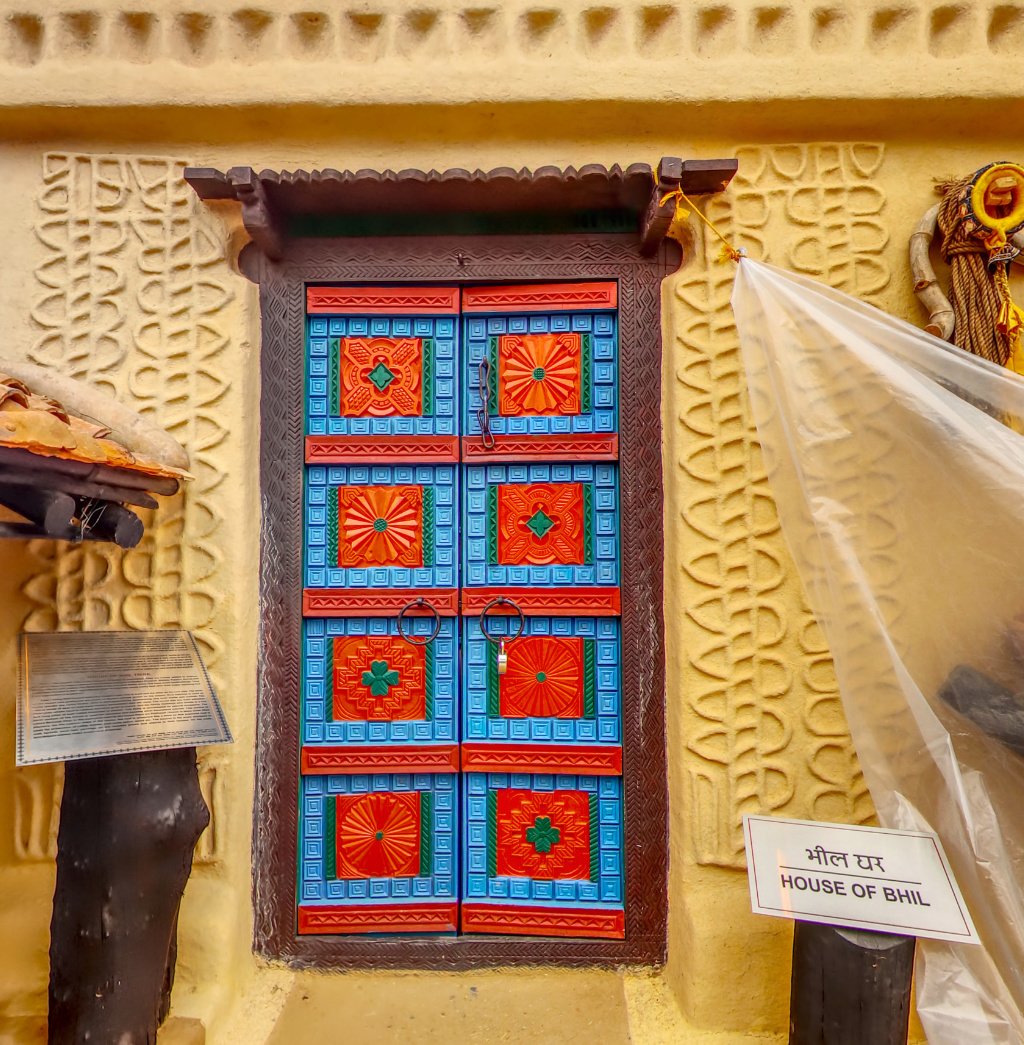House of Bhil
The Bhils mostly live in dry and less fertile areas, so the crops are less, that's why Bhils build their houses in the fields to take care of them. Due to these reasons, the arrangement of the village is scattered. The east-facing Bhil house has a two-slope roof at the front and back.
The battens which bear the whole weight of the roof are made of teak. The walls of the houses and granaries were earlier made of thatch prepared by knotting the "siyava’' bush growing on the slopes. Bamboo is now used for this work, because these bushes are not easily available now. The wall is strengthened by applying some clay from inside and outside. The roof is made of teak or date palm leaves or kawelu.
There are some special parts of the house — 'Ohri Wala ghar' where food is cooked, grains are kept and the deity of the house resides. The goddess of this earth resides on a five hands high teak pillar called ‘Ghinchari’ and a red cloth is tied on it, which is worshiped on every occasion. The second part of the house which is used for sleeping and keeping other things is called Mewara.
The courtyard outside the house in which there is a Palendi to keep pots filled with water. On the right and left side of the outer walls of the house, 'Dhalia’ is made by taking out thatch, in which cattles, fodder, sticks, woods etc. are kept. In the areas where there is a dense teak forest, a lot of wood carving in the houses can be seen there.
Women paints open hand prints, fist prints or Sarkala and other auspicious symbols on the walls of the house.

